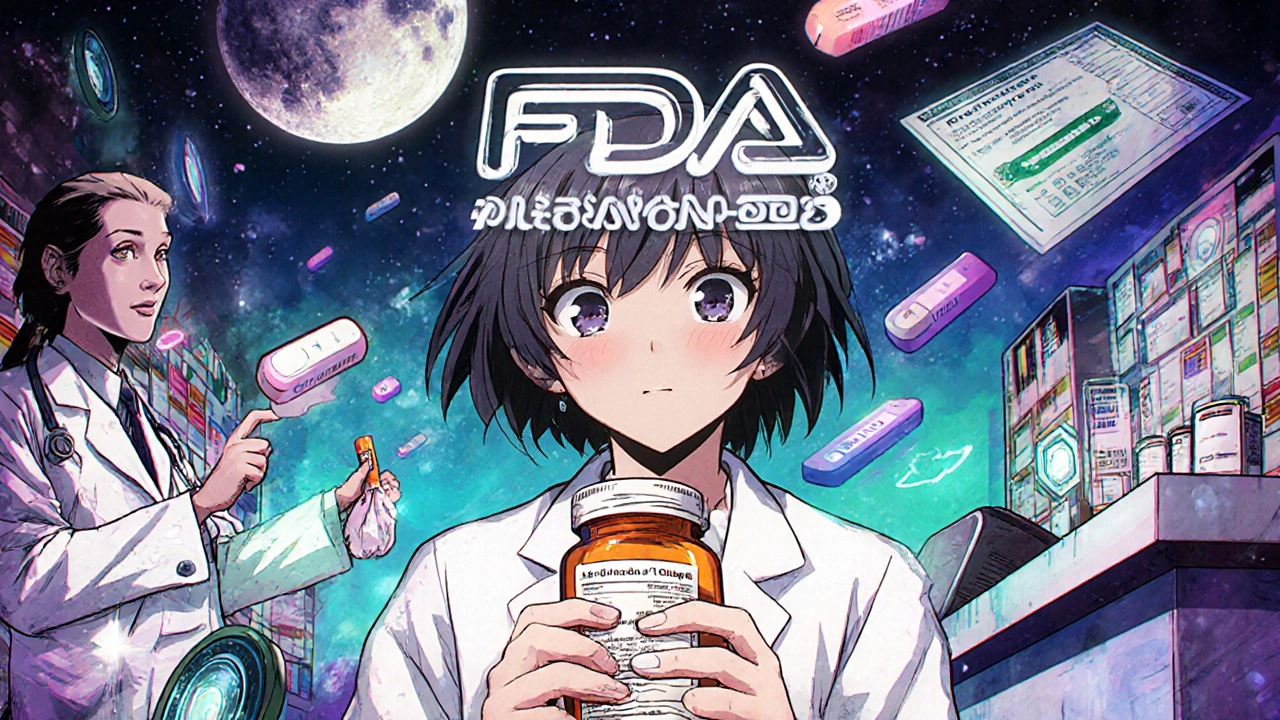Starting a new medication isn’t just about picking up a prescription. If that drug has serious risks, you might be dealing with a REMS program - and skipping the checks could delay your treatment or put you at risk.
What Is REMS and Why Does It Matter?
REMS stands for Risk Evaluation and Mitigation Strategy. It’s a safety program required by the U.S. Food and Drug Administration (FDA) for certain medications that carry serious risks - like birth defects, life-threatening side effects, or high potential for misuse. These aren’t optional guidelines. They’re legal requirements built into how the drug can be prescribed, dispensed, and used. Think of REMS as a safety net. Without it, some powerful drugs - like those for severe acne, cancer, or opioid pain - might never be approved because the risks would outweigh the benefits. But with REMS, patients can still get access, as long as specific safeguards are followed. As of 2025, there are 76 active REMS programs in the U.S. covering drugs like isotretinoin (for acne), thalidomide (for multiple myeloma), mycophenolate (for organ transplants), and extended-release opioids. Each one is custom-built based on the specific danger the drug poses.What Does a REMS Program Actually Require?
Not all REMS are the same. Some are simple. Others are complex. The FDA allows four main types of elements:- Medication Guides: Printed handouts given to patients at the pharmacy. These explain the risks in plain language. You should get one every time you refill.
- Communication Plans: Letters, emails, or training materials sent to doctors and pharmacists to remind them of the risks.
- Elements to Assure Safe Use (ETASU): The strictest part. This can mean prescriber certification, mandatory lab tests, patient registries, or even requiring the drug to be given only in certified clinics.
- Implementation Systems: The tech and processes that track compliance - like online portals, pharmacy verification systems, or electronic prescribing alerts.
- iPLEDGE for isotretinoin: Both the doctor and patient must register online. Women of childbearing age must take two negative pregnancy tests before getting the drug, and use two forms of birth control.
- Zyprexa Relprevv (an injectable antipsychotic): Must be given in a certified facility. Patients are monitored for at least three hours after injection because of the risk of sudden drowsiness or confusion.
- Opioid Analgesic REMS: Doctors must complete accredited education on safe prescribing, but don’t need to be certified. The pharmacy must confirm the education was done before filling.
How to Check REMS Requirements Before Starting a Medication
If you’re about to start a new drug, don’t assume it’s safe just because your doctor prescribed it. Here’s how to verify REMS requirements - step by step.- Look at the prescription label. If a REMS is required, the pharmacy label will often say something like “REMS: Patient Enrollment Required” or “Must Complete Training.”
- Check the prescribing information. Every drug’s official prescribing guide (called the “package insert”) includes a REMS section. You can find this on DailyMed.gov by searching the drug name.
- Use the FDA REMS Public Dashboard. Go to fda.gov/rems. Search by drug name. The dashboard shows exactly what’s required: Is certification needed? Is there a registry? Are there special administration rules?
- Contact the pharmacy. Pharmacists are on the front lines. Ask them: “Does this drug have a REMS? What do I need to do?” They can tell you if you need to enroll in a portal or complete paperwork.
- Visit the manufacturer’s REMS website. Most REMS programs have their own site. For isotretinoin, it’s iPLEDGEprogram.com. For thalidomide, it’s thalidomideREMS.com. These sites have enrollment forms, training videos, and FAQs.
- Ask your doctor if they’re certified. If the REMS requires prescriber certification, your doctor must be enrolled. Don’t be shy - ask: “Are you certified to prescribe this drug?” If they’re not, they can’t legally give you the script.
Common Mistakes People Make
Even with all the tools available, people still get stuck. Here’s what goes wrong:- Assuming the doctor handles everything. Many REMS require you to register, complete training, or get lab tests. If you don’t act, the pharmacy won’t fill it.
- Ignoring the Medication Guide. These aren’t junk mail. They explain what to watch for - like signs of liver damage, suicidal thoughts, or severe infections.
- Waiting until the last minute. Enrolling in a REMS portal can take days. Some training takes an hour. Don’t wait until your refill is due.
- Thinking it’s the same for every pharmacy. Not all pharmacies are certified to dispense certain REMS drugs. If one says no, call another. Chain pharmacies like CVS or Walgreens often have REMS-trained staff.
What If You’re Delayed or Denied?
About 42% of patients on REMS drugs report delays - sometimes for over a week. That’s not just annoying. It can be dangerous if you’re treating a serious condition. If you’re stuck:- Ask your doctor to call the REMS program directly. They often have dedicated support lines.
- Call the drug manufacturer’s REMS help desk. Most have 24/7 phone lines.
- Ask your pharmacist to escalate it. They can contact the manufacturer’s distribution center.
- If you’re in an emergency, ask about alternative treatments. Sometimes, a different drug without REMS can be used temporarily.

How REMS Is Changing in 2025
REMS isn’t static. The FDA is actively trying to fix what’s broken. In 2023, the FDA updated its Public Dashboard to show real-time changes - though delays still happen up to two weeks after updates. New policies now require all REMS programs to include mobile-friendly tools. That means you’ll soon be able to complete training, check your enrollment status, or upload lab results right from your phone. Pharmacy benefit managers (PBMs) like CVS Caremark and UnitedHealthcare’s Optum are now integrating REMS checks into electronic prescribing systems. That means your doctor’s EHR might automatically flag if you’re not enrolled - before the script even reaches the pharmacy. The FDA also plans to cut unnecessary paperwork by 30-40% over the next two years. Some programs are dropping redundant lab tests or simplifying registration forms. But for high-risk drugs - especially gene therapies and biologics - REMS will only grow. Experts predict 85-90% of new cancer drugs after 2025 will need some form of REMS.Bottom Line: Don’t Skip the Steps
REMS programs are frustrating. They add time, paperwork, and stress. But they exist for a reason: to keep you safe. Before you start any new medication - especially if it’s for a chronic condition, mental health issue, or serious illness - take five minutes to check REMS requirements. It could save you days of delays… or worse. Use the FDA dashboard. Ask your pharmacist. Read the Medication Guide. Get certified if needed. You’re not just following rules - you’re protecting your health.Do all new medications have REMS requirements?
No. Only medications with serious safety risks require REMS. Most common drugs like antibiotics, blood pressure pills, or statins don’t need them. The FDA only requires REMS when the potential harm is significant enough that it could outweigh the benefit without strict controls. About 15-20% of new drugs approved each year end up with a REMS program.
Can I get a REMS medication without enrolling in the program?
No. If a drug has Elements to Assure Safe Use (ETASU), you must complete all required steps before the pharmacy can dispense it. This includes registering, completing training, or passing lab tests. Pharmacies are legally required to verify compliance. If you skip the steps, they cannot fill your prescription.
Who is responsible for making sure REMS requirements are met?
Everyone plays a role. Your doctor must be certified to prescribe. The pharmacy must verify your enrollment and provide the Medication Guide. You must complete any required training, testing, or registry enrollment. The manufacturer runs the REMS program and tracks compliance. The FDA audits the whole system. If any part fails, the drug can be pulled from the market.
How long does REMS certification take for doctors?
It varies. For opioid prescribing, training takes about 30-60 minutes and can be done online. For drugs like thalidomide or lenalidomide, certification requires 60-90 minutes of training, a quiz, and registration on the manufacturer’s portal. Most programs allow doctors to complete this in one sitting. Certification usually lasts 1-3 years, depending on the program.
What happens if I don’t complete my REMS requirements?
Your prescription won’t be filled. Pharmacies are legally required to check compliance before dispensing REMS drugs. If you miss a step - like not uploading a pregnancy test or not completing training - the system will block the fill. You’ll need to go back and finish the requirement before trying again. Delays can last days or even weeks if you wait until the last minute.
Are REMS programs only for U.S. patients?
Yes. REMS programs are enforced by the U.S. Food and Drug Administration and apply only to medications dispensed within the United States. Other countries have their own safety programs - like the EU’s Risk Management Plans - but they’re not the same. If you’re outside the U.S., REMS requirements don’t apply to you, even if you’re taking a U.S.-approved drug.
Can I use a generic drug if the brand has a REMS?
Yes - but only if the generic is included in the same REMS program. The FDA requires that generics with the same active ingredient as a branded REMS drug must follow the same safety rules. So if the brand has a REMS, the generic does too. Always check the FDA REMS Public Dashboard to confirm the generic is covered under the same program.
How do I know if my REMS requirement has changed?
The FDA updates the REMS Public Dashboard regularly, but changes can take up to 14 days to appear. If you’re enrolled in a program, check your email - manufacturers often send updates about changes to training, enrollment, or testing. You can also call the REMS program’s help line directly. Don’t assume your old steps still apply.

Johnson Abraham
November 13, 2025 AT 19:52Shante Ajadeen
November 15, 2025 AT 00:14Esperanza Decor
November 16, 2025 AT 00:25Danae Miley
November 17, 2025 AT 19:04Andrew Forthmuller
November 18, 2025 AT 14:15Erica Cruz
November 19, 2025 AT 18:26dace yates
November 21, 2025 AT 04:50Benjamin Stöffler
November 22, 2025 AT 01:18Deepa Lakshminarasimhan
November 24, 2025 AT 00:17vanessa k
November 25, 2025 AT 14:59Elizabeth Buján
November 25, 2025 AT 14:59Samantha Wade
November 26, 2025 AT 07:37Charles Lewis
November 26, 2025 AT 22:18Renee Ruth
November 28, 2025 AT 14:42